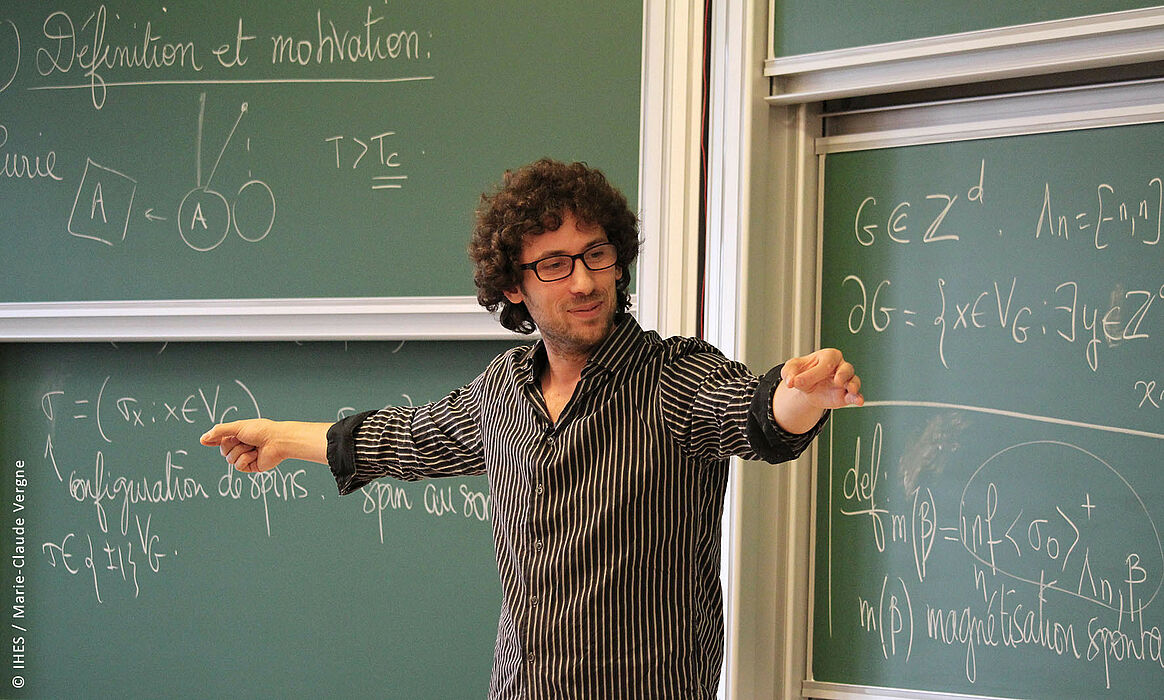Interview with Prof. Hugo Duminil-Copin on the occasion of this year's Weierstrass Lecture
Prof. Hugo Duminil-Copin, multiple award-winning mathematician and winner of the Fields Medal, is this year's keynote speaker at the Paderborn Weierstrass Lecture on May 12. In an interview, he explains what he is researching, what percolation models are all about and why he is so fascinated by phase transitions.
You deal with the interface of probability theory, combinatorics and mathematical physics. What does that mean to a layperson?
Duminil-Copin: Mathematical physics is the study of objects motivated by physics using mathematics. Concretely, my research work focuses on the mathematical study of phase transitions. I work on the brutal changes of matter like the transition from water to steam at 100 degrees of temperature. My objective is to understand and model mathematically this kind of transitions.
Probability, which is nothing but the theory of random events, arrives naturally when doing mathematical physics. The complexity of our world forces us to model it using randomness. When it becomes impossible to exactly track the behavior of a physical system, one crucially turns to probability and ask oneself what is the typical behavior of the system. Even in mathematics, this idea to (sometimes systematically) turn to the typical behavior of things is fairly new yet very powerful.
What is the role played by combinatorics? This part of mathematics could be renamed “the art of counting”, and counting is a very powerful mean to understand the probability of random events. It is therefore fairly frequent that probability meets combinatorics.
Last year you were awarded the Fields Medal for "solving long-standing problems in the probabilistic theory of phase transitions in statistical physics, in particular in dimensions three and four". Can you describe what this is all about?
Duminil-Copin: The laudatio of the Fields medal indeed mentions my work on the 3D and 4D Ising model, a model of cooperative phenomena, as one important contribution, but for me this is only one piece of a bigger puzzle. I am mostly interested in understanding the behavior of what is called dependent percolation models. These are models of random graphs intended to understand the porosity of materials, for instance how gas or liquid can flow through a porous stone. Before I started my PhD, there was a big discrepancy between our understanding of certain percolation models exhibiting a very fast decay of correlations, and our understanding of percolation models exhibiting a slower decay of correlations. I try in my work to develop the theory of the latter. An important consequence of this line of research is that a variety of models are connected to these percolation models, and that one can get many new results by first translating a problem into percolation theory, and then apply the newly developed percolation theory to answer the problem. I am particularly interested in applications of percolation theory to the understanding of phase transitions, for instance the loss of magnetization of magnets at the so-called Curie temperature.
What else do you hope to accomplish with your research in the future? Are there any particular goals that you have set for yourself?
Duminil-Copin: In research, the solution to every question raises a vast number of new questions. I am therefore not trying to plan too much in advance what I would like to do, and rather let myself follow the flow of my own research, in particular in which direction I am led to work by what I learn and what I discover.
Overall, the variety of phase transitions in our environment offers a beautiful playground for mathematical physicists. I would like to develop the range of potential applications of the theory of percolation by studying new physical phenomena, and therefore new associated percolation models. This will raise substantial challenges and I am looking forward to tackle them.

